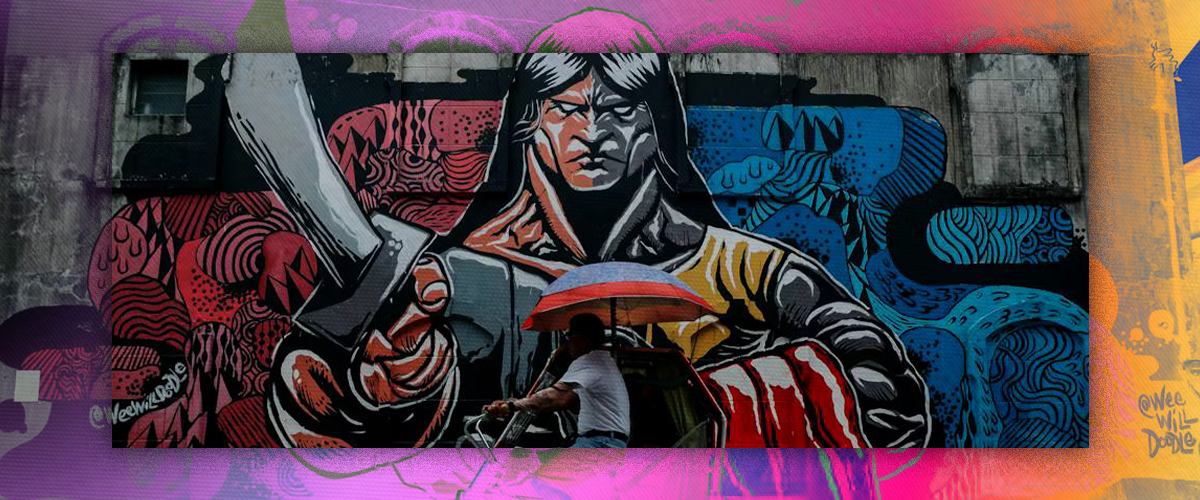ANYONE from the Philippines knows that when it comes to arts and culture, their hometown is unmatched. From talented artists of every region to rich and beautiful traditions, there is no denying that Filipino excellence has always been – and will always be – alive and well.
No matter your age or where you come from, Filipino art and culture are things that transcend boundaries. Their beauty is something understood by all, especially by the younger generations.
What exactly makes the Philippines stand out when it comes to these two aspects? For a deeper insight, republicasia asked Gen Zs why they love the craft of their very own.
Why Filipinos do it better, according to Gen Zs
16-year-old Gabriela is a Grade 12 student currently in the Arts and Design Track (ADT).
What he enjoys the most about Filipino culture is the different mediums of art that indigenous communities have, such as weaving, carving, and tattooing. He further appreciates how, over the years, these arts have been reimagined in contemporary ways, allowing for both preservation and innovation.
“The colonial history of the Philippines resulted in the diversity of cultures and traditions,” he said.
“Local artists know how to translate our colorful culture and strong traditions. They know how to capture the essence of our country, no matter what medium it may be. Music, dance, theater, painting, poetry – the artists of this country are not afraid to express themselves and to do the unexpected.”
More than this, Gabriela finds it fascinating to watch the introduction of digital art, and how more and more young artists who have started pursuing this are looking to Filipino artists and artworks for inspiration.
He shared: “It shows a fascinating interplay of tradition and modernity, as well as the increasing impact of globalization. Filipino artists are carving out spaces for themselves in both local and international arenas, embracing the digital age while also fighting to preserve cultural legacies.”
23-year-old Joshua, on the other hand, is a freelance multimedia artist, as well as a DJ and music producer currently residing in Hong Kong. He did, however, grow up in the Philippines.
In his last visit to the Philippines, he was able to see the Ayala Museum and attend Art Fair Philippines. In the future, he hopes to visit the National Museum of Fine Arts. He has a deep love for the works of artists Fernando Amorsolo and Juan Luna, as well.
Joshua notes that, with the help of TikTok culture and internet accessibility, many Filipinos have broadened their knowledge about Philippine arts and culture.
While it is difficult to make it as an artist in the modern day, he notes that the Philippines is one country that has several supportive avenues that strive to highlight local arts and culture, whether that be through art fairs, exhibitions, or the like.
“Being a Filipino based in Hong Kong for 10 years has taught me how even a country with a long history as a melting pot of Western [and] Eastern cultures is something the Philippines should look [forward] to in appreciating art and culture,” he shared.
Given the current developments in the realms of both Philippine arts and culture, Gabriela doesn’t doubt that local artists will soon receive the local and global recognition they deserve.
Leaps in development
At present, many efforts are being made to further develop arts and culture within the Philippines.
One example of this, as reported by the Philippine News Agency, is First Lady Louise “Liza” Marcos reaching out to the United Arab Emirates (UAE) last June to explore possible collaborations between them and the Philippines in terms of culture, arts, and heritage.
The First Lady visited the UAE, talking with the wife of the President, H.H. Sheikha Salama bint Hamdan Al Nahyan, and discussed with her opportunities to enhance the cooperation between both countries in relation to their cultural and artistic landscape.
Liza Marcos, known by many as a lawyer and professor, has continuously advocated to the preservation of Filipino culture through continuous documentation and research, as seen in her participation in the cultural mapping of Ilocos Norte back in 2002.
She also actively supported both the Museo Ilocos Norte and advocated for the revival of the weaving industry, which is a large part of Philippine culture.
As seen in the book “Inabel Philippine Textile from the Ilocos Region”, the First Lady helped to enrich the Ilocano roots of many by putting up trade centers dedicated to marketing traditional crafts, as well as fashion shows featuring local designers and weaving centers made to train young weavers.
The First Lady is also a part of the Board of Trustees of the Asian Cultural Council, which hopes to advance international dialogue, focusing on cultural exchange activities in both Asia and the United States.
During her time here last year, she cooperated with government agencies and private creative industry practitioners to create an exhibition showcasing the talents of weavers from Ilocos. This project was later exhpanded to “Likha,” which aimed to showcase talented weavers as well as embroiderers, basket makers, woodcarvers, pottery makers, shell craftsmen, and many more Filipino artisans from all over the country.
Many are well-aware of the richness of Philippine arts and culture, and currently, the government is working toward making that known to all Filipinos.
One such example of this is the aim to make it easier for people to learn about their culture and heritage by launching the Presidential Library, which can be found on the second floor of the National Library of the Philippines.
Here, Filipinos have access to books about Philippine culture and heritage, ensuring that anyone, no matter whether they are rich or poor, can know more about their country and history.
Aside from this, the First Lady also spearheaded the repurposing of three heritage mansions that had previously been abandoned. One such example of this is turning the Teus House into the Presidential Museum, wherein people can learn all about the past presidents of the Philipines.
Another is the Goldenberg Mansion, a building full of history, which has now been converted into the Goldenberg Series, which has been described as a showcase of Filipino culture filled with enthralling performances, enlightening exhibitions, and educational programs, as per the Presidential Communications Office.
In this same statement, they wrote that this series would be a stepping stone for emerging artists and cultural practitioners, allowing them to showcase their talents as well as contribute to preserving and promoting the Filipino cultural identity.
For Filipino culture, the future is bright. People can’t wait to see what is yet to come.
How useful was this post?
Click on a star to rate it!
Average rating 0 / 5. Vote count: 0
No votes so far! Be the first to rate this post.
We are sorry that this post was not useful for you!
Let us improve this post!
Tell us how we can improve this post?








